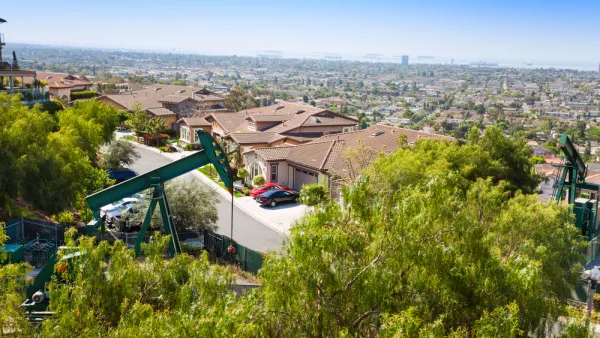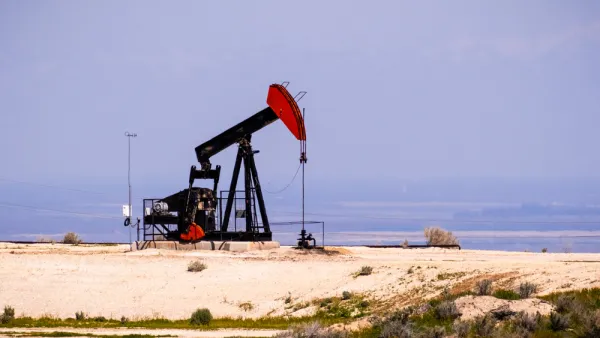What a revision! The EIA changed the recoverable oil reserves in California's vast Monterey Shale formation from 13.7 billion barrels to 600 million barrels using existing technology. Also, for the first time, a California county banned fracking.
The Energy Information Administration (EIA) is expected to release the revised estimates next month in what will be "a blow to the nation's oil future", writes Louis Sahagun, and also a disappointment for the state's economy. Sacramento was hoping that the new drilling would bring "2.8 million new jobs to California and boost tax revenue by $24.6 billion annually" according to a 2013 University of Southern California analysis [PDF].
"The Monterey Shale formation (see map) contains about two-thirds of the nation's shale oil reserves," writes Sahagun. So what caused the downward revision of recoverable oil from the formation?
The energy agency said the earlier estimate of recoverable oil, issued in 2011 by an independent firm under contract with the government, broadly assumed that deposits in the Monterey Shale formation were as easily recoverable as those found in shale formations elsewhere.
It isn't, thanks to California's geology - particularly its seismic activity.
Unlike heavily fracked shale deposits in North Dakota and Texas, which are relatively even and layered like a cake, Monterey Shale has been folded and shattered by seismic activity, with the oil found at deeper strata.
Sierra Club California, a strong opponent of fracking that has been advocating a moratorium included in Senate Bill 1132, greeted the news with caution. "The new estimates won't discourage the oil companies and oil industry service companies", states their press release.
Indeed, Tupper Hull, spokesman for the Western States Petroleum Association, stated, "We have a lot of confidence in the intelligence and skill of our engineers and geologists to find ways to adapt."
On the political front, Santa Cruz County became the first to ban fracking in the state with the Board of Supervisor's unanimous 5-0 vote, writes Jason Hoppin of the Santa Cruz Sentinel.
The move, however, is largely symbolic: There are no known oil leases in Santa Cruz County, nor has it been targeted by oil prospectors.
But other counties with proven oil reserves may follow. "Butte, Santa Barbara and San Benito counties are all considering fracking bans. Beverly Hills also recently passed a ban, becoming the first city to do so."
FULL STORY: U.S. officials cut estimate of recoverable Monterey Shale oil by 96%

Analysis: Cybertruck Fatality Rate Far Exceeds That of Ford Pinto
The Tesla Cybertruck was recalled seven times last year.

National Parks Layoffs Will Cause Communities to Lose Billions
Thousands of essential park workers were laid off this week, just before the busy spring break season.

Retro-silient?: America’s First “Eco-burb,” The Woodlands Turns 50
A master-planned community north of Houston offers lessons on green infrastructure and resilient design, but falls short of its founder’s lofty affordability and walkability goals.

Test News Post 1
This is a summary

Analysis: Cybertruck Fatality Rate Far Exceeds That of Ford Pinto
The Tesla Cybertruck was recalled seven times last year.

Test News Headline 46
Test for the image on the front page.
Urban Design for Planners 1: Software Tools
This six-course series explores essential urban design concepts using open source software and equips planners with the tools they need to participate fully in the urban design process.
Planning for Universal Design
Learn the tools for implementing Universal Design in planning regulations.
EMC Planning Group, Inc.
Planetizen
Planetizen
Mpact (formerly Rail~Volution)
Great Falls Development Authority, Inc.
HUDs Office of Policy Development and Research
NYU Wagner Graduate School of Public Service



























